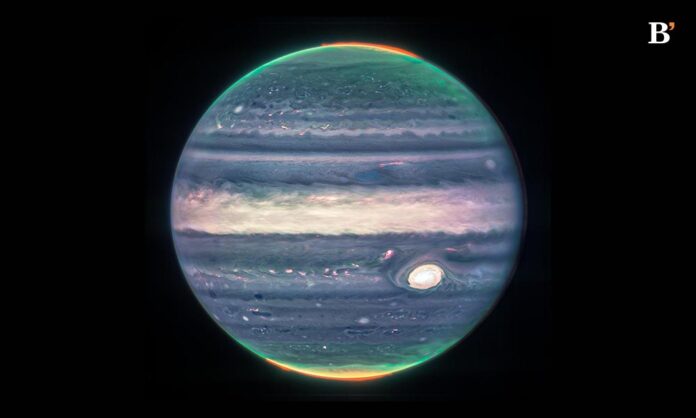Key Highlights
- The James Webb Space Telescope of NASA has clicked new images of Jupiter.
- The images feature auroras, hazes, moons and rings. The observations will give researchers more clues into the inner life of Jupiter.
Jupiter has auroras, powerful winds, giant storms, and extreme temperature and pressure conditions. James Webb Space Telescope of NASA has clicked new images of the giant planet. Webb’s Jupiter observations will give researchers even more clues to the inner life of Jupiter.
The planetary astronomer Imke de Pater, professor emerita of the University of California, Berkeley, said they had not expected it to be this good. De Pater led the observations of Jupiter with Thierry Fouchet, a professor at the Paris Observatory as a part of an international partnership for Webb’s Early Release Science program.
Webb is an international mission led by NASA with its partners CSA (Canadian Space Agency) and ESA (European Space Agency). She said it is remarkable that they can see details on Jupiter with its rings, tiny satellites, and even galaxies in one image.
The two images come from the Near-Infrared Camera (NIRCam) of the observatory. It has three specialized infrared filters that showcase details of Jupiter. The light has been mapped onto the visible spectrum since infrared light is invisible to the human eye. Usually, the longest wavelengths appear redder, and the shortest wavelengths appear as more blue.
Astronomers partnered with citizen scientist Judy Schmidt to translate the Webb Space Telescope data into images.
The standalone view of Jupiter highlights auroras that extend to high altitudes above both Jupiter’s northern and southern poles. The auroras shine in a filter mapped to redder colors, highlighting light reflected from lower clouds and upper hazes. Another filter, which is mapped to yellows and greens, shows hazes revolving around the northern and southern poles. A third filter shows light reflected from a deeper main cloud mapped to blues.
Fore more such latest news on space and tech click here




